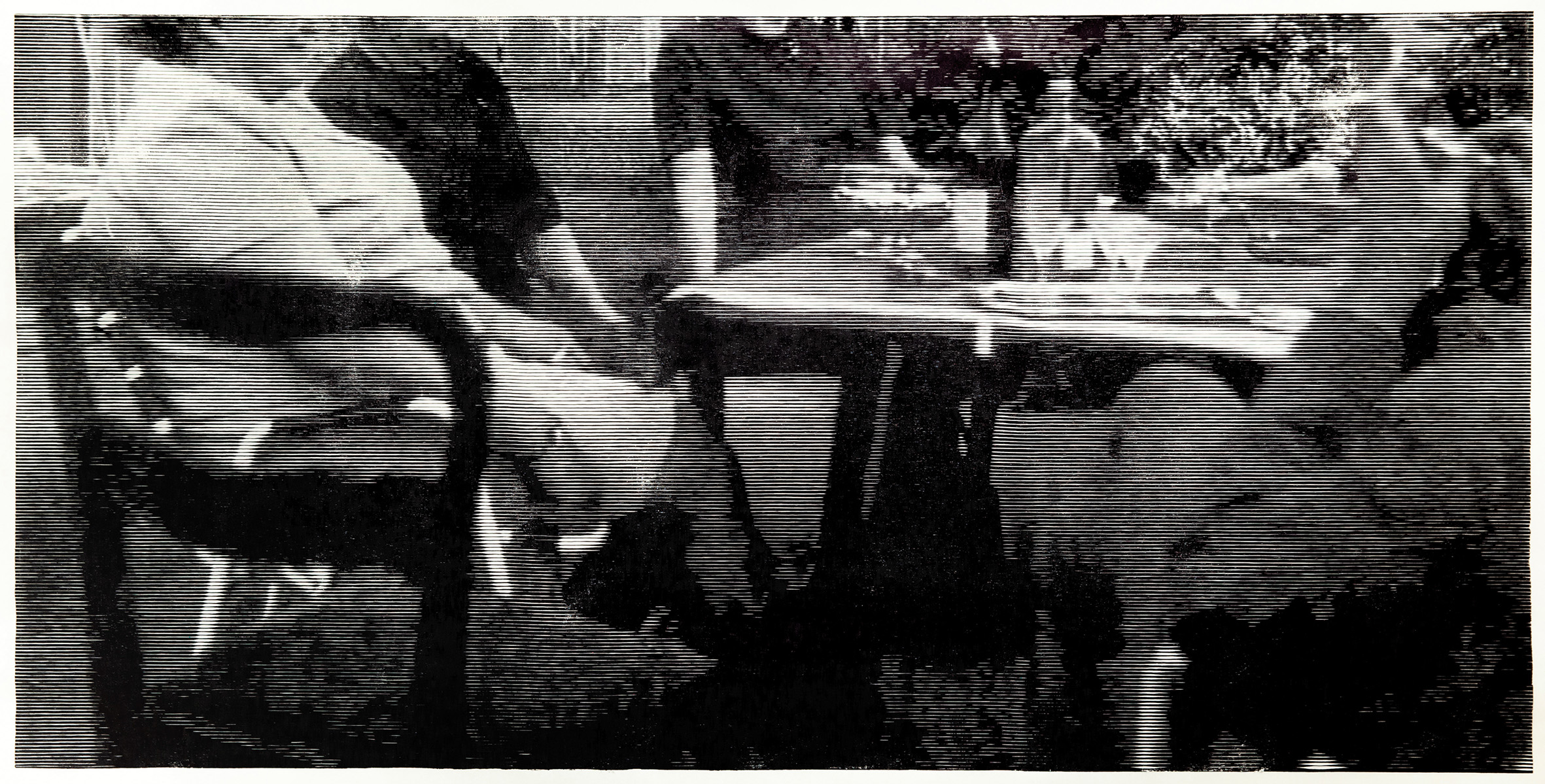Abstract
When I started my Master of Fine Arts degree in 2020, I was interested in how the way memory is perceived and experienced can be expressed through printmaking, both in method and in content. Two months into my studies, South Africa entered a hard lockdown, and universities were closed due to the COVID-19 pandemic. I lost access to my studio and had to pivot from my usual practice – which required the use of presses, darkrooms, and solvents – to one that could easily be undertaken in a small apartment. I shifted to creating detailed linocuts, which eventually culminated in the production of several large woodcuts in 2021. The production and printing of woodcuts of that size required an unexpected degree of physical engagement. Due to the size of the blocks, I was unable to visually resolve the image I was working on. Touch and frottage became the only way for me to ‘see’ the image I was working on. The haptic engagement with the woodblocks, both in terms of production and perception, inspired the creation of a large-scale installation consisting of 150 graphite rubbings taken from the block, which were exhibited together with the prints and the woodblocks. My heightened awareness of my physical body during the production of the blocks, the subsequent labour of hand printing, and the creation of the frottage installation led me to reconsider my theoretical approach to memory and incorporate its material and physiological aspects into my work.
References
Brollo, D. (2013). Untying the knot: Memory and forgetting in contemporary print work [online]. Monash University Publishing. Available from: https://nova.newcastle.edu.au/vital/access/manager/Repository/uon:14242 [Accessed 23 April 2021].
Didi-Huberman, G. (2018). Opening up an anachronistic point of view (1997). (Trans. Miranda Stewart). In: Perspectives on contemporary printmaking: Critical writing since 1986. Manchester University Press, 184–195.
Klatzky, R.L., Lederman, S.J. and Metzger, V.A. (1985). Identifying objects by touch: An “expert system”. Perception & Psychophysics. [online]. 37 (4), pp. 299–302. Available from: http://link-springer-com/article/10.3758/BF03211351 [Accessed 14 May 2022].
Marks, L.U. (2008). Thinking Multisensory Culture. Paragraph. [online]. 31 (2), Edinburgh University Press, pp. 123–137. Available from: http://www.jstor.org/stable/43151879 [Accessed 5 May 2022].
Pelzer-Montada, R. (2008a). Authenticity in Printmaking – A Red Herring? [online]. Available from: https://www.academia.edu/1865316/Authenticity_in_Printmaking_A_Red_Herring [Accessed 12 January 2021].
Pelzer-Montada, R. (2008b). The Attraction of Print: Notes on the Surface of the (Art) Print. Art Journal. [online]. 67 (2), pp. 74–91. Available from: http://www.tandfonline.com/doi/abs/10.1080/00043249.2008.10791305 [Accessed 3 June 2020].
Reeves, K. (1999) The Re-vision of Printmaking. In: Impact Proceedings. [online]. International Multi-disciplinary Printmaking Conference Center for Fine Print Research, UWE Bristol, Impact Press, 69–75. Available from: https://www.yumpu.com/en/document/read/8204514/impactproceedings-copypdf-university-of-the-west-of-england.

This work is licensed under a Creative Commons Attribution 4.0 International License.
Copyright (c) 2024 Oliver Hambsch
